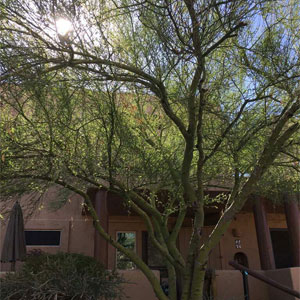
This tree is the Palo Verde. The name is Spanish and literally means “green wood or green stick.” It is indigenous to the Sonoran Desert in two forms. The trunk and branches of the Blue Palo Verde are bluish green while those of the Foothill, Yellow or Littleleaf Palo Verde are yellow green. In 1954, the Arizona legislature designated the Palo Verde as the state tree. Since it didn’t distinguish between the two species, both share the honor as state tree.
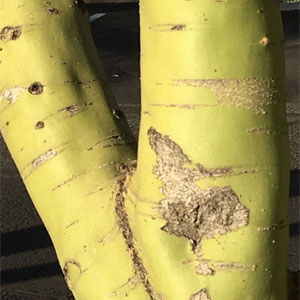
Having a green trunk of either hue means that the tree can photosynthesize (make chlorophyll and feed itself) during periods when the tree has no leaves. The leaves of the Palo Verde are very tiny to begin with, and when the tree can’t get enough water, it just drops most or all of them in order to preserve the trunk and the roots. In very dry conditions, it may even drop some of its branches.
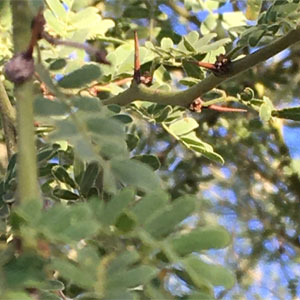
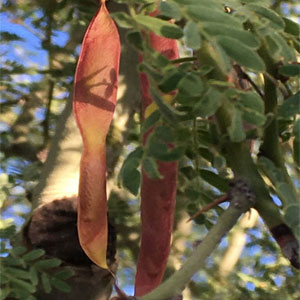
Palo Verdes are native to the Sonoran Desert which includes most of Arizona, southeastern California and northern Mexico. Like many desert-dwelling plants, Palo Verde trees have thorns among their leaves to discourage grazing animals. Palo Verdes have multiple trunks, and when they are small, often look more like bushes than trees. However, in residential and urban areas, they are often pruned to have just a few central trunks. The Foothill Palo Verde is shorter than its cousin, only reaching a maximum of 20 feet, while its Blue cousin can grow as tall as forty feet. The Foothill also has smaller leaves than the Blue and can live from 100 to 400 years. The Blue needs more water, grows faster, and rarely lives for a century.
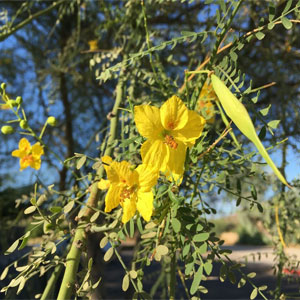
In late winter, early spring, Palo Verdes put on a display of beautiful tiny yellow flowers. The flowers of both kinds have five petals, but the Blue’s flowers are bright yellow while the Foothill’s are a pale yellow with one white petal. At the height of the season, you can’t even see the leaves for the abundance of flowers. When they drop, the ground appears to be covered with a floral yellow snow.
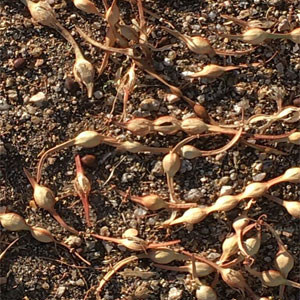
Along with or just after the blossoms, the trees put forth small pods, similar to peas or edamame, with one to eight seeds. When young and tender, they can actually be eaten like edamame and can have a somewhat sweet taste. Native peoples used the dried seeds to make flour and the young pods as a vegetable in stews.
I don’t know of any current medicinal use of the Palo Verde, although some have suggested that the native peoples boiled the stems to make a tea which soothed an upset stomach. Hay fever sufferers often blame Palo Verde flowers for creating air-bourne pollen that makes them miserable during the height of blooming season.
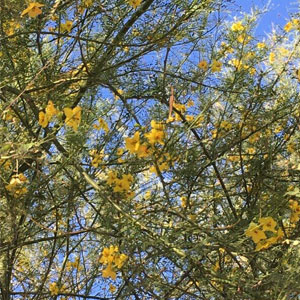
All varieties of Palo Verde are active participants in their ecosystem. When in bloom, they attract pollinators like bees and beetles and nesting birds. They provide food for grazers like mule deer, big horn sheep and jackrabbits as well as a variety of small mammals. Some say they also protect young Saguaro cactus, shading them in the summer and keeping them warm during the winter.

